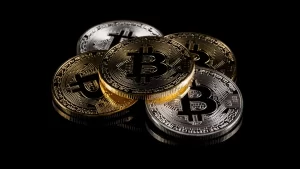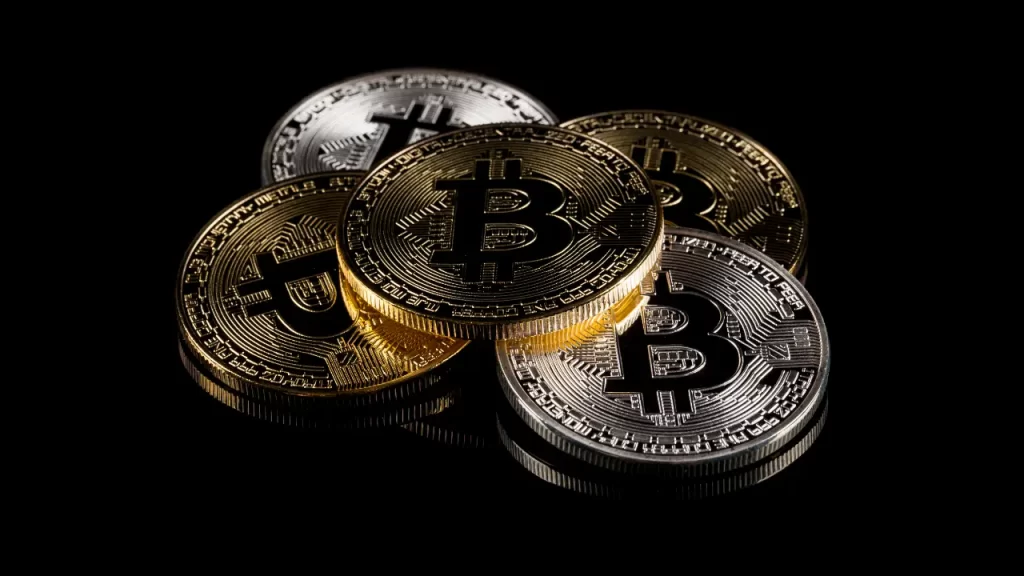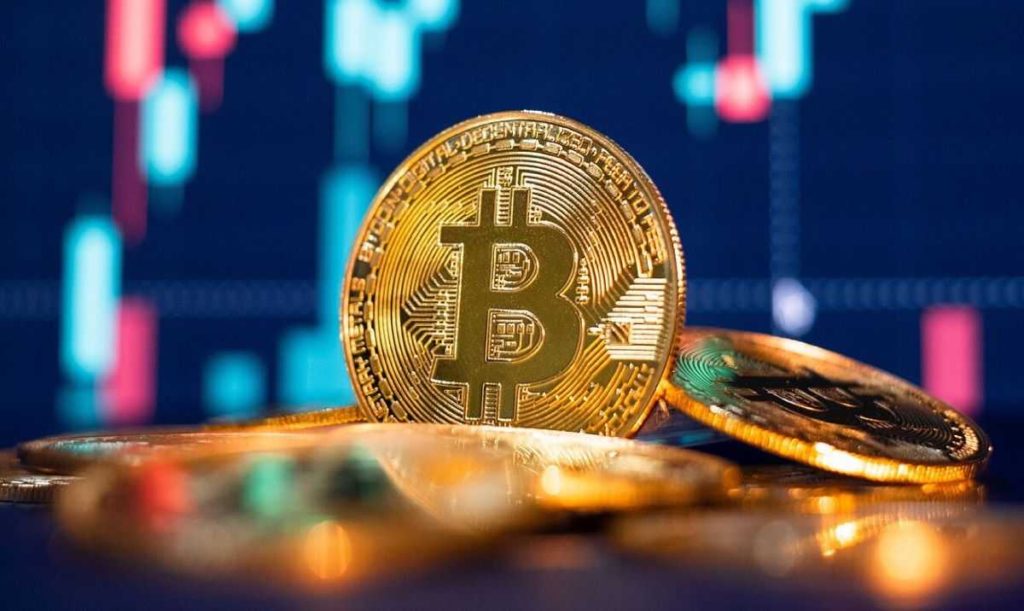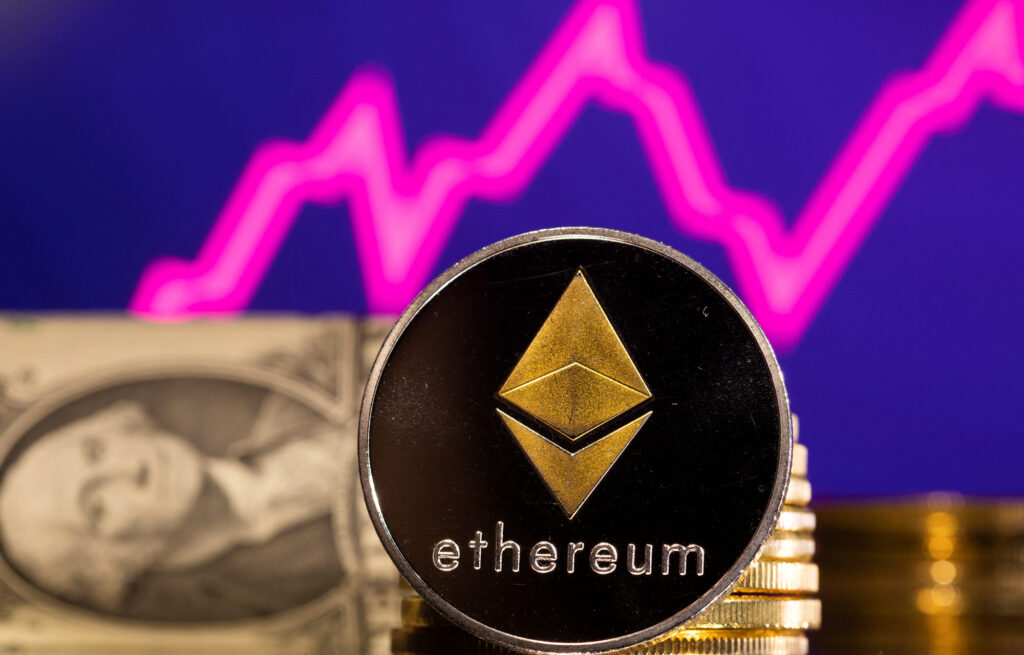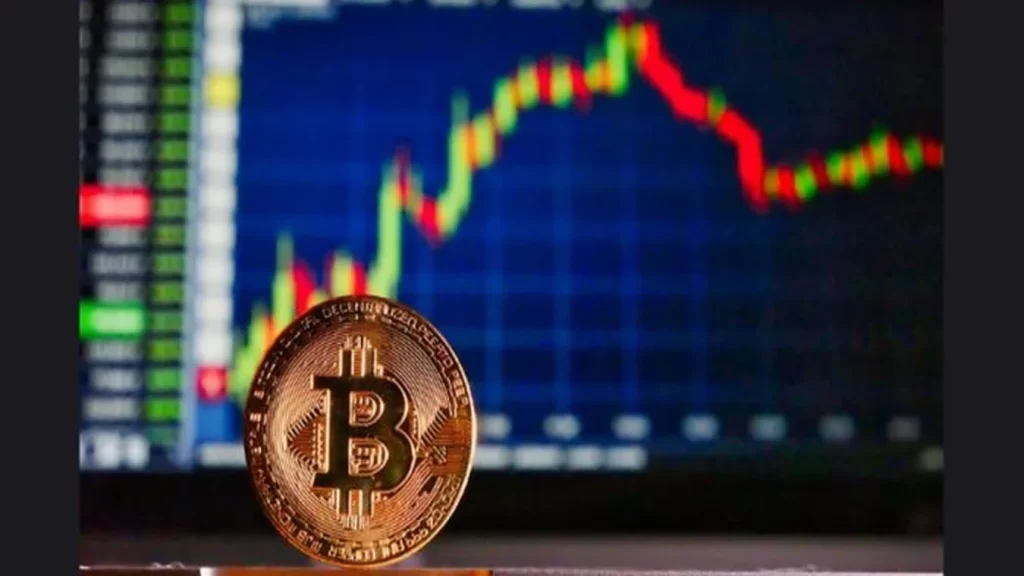The upcoming crypto options expiry is raising concerns about significant Bitcoin sell pressure that could push the price below a key support level.
On August 16, over $1.4 billion worth of Bitcoin (BTC) options are set to expire at 8:00 am UTC, according to Deribit. The “max pain point” for these options is set at $60,000, meaning this is the price at which most options contracts would expire worthless.
However, Bitcoin’s price fell over 3.6% in the past 24 hours, trading at $58,101 as of 8:35 am, according to Cointelegraph data.
This decline suggests that the $1.4 billion in options could introduce more downside volatility unless Bitcoin stages a recovery above $60,000. Typically, periods close to options expiry bring increased price volatility to the crypto market.
Could Bitcoin ETFs help BTC price recover?
While inflows into U.S. spot Bitcoin exchange-traded funds (ETFs) were positive for two consecutive days, they turned negative again on August 14, with net outflows exceeding $81 million, according to Farside Investors.
Bitfinex analysts suggested that the favorable Consumer Price Index (CPI) reading could encourage more inflows into Bitcoin ETFs. They told Cointelegraph:
“The favorable CPI data is expected to catalyze further inflows. Investors are likely positioning themselves to benefit from the expected rate cut and the potential for a broader market rally. As a result, we might observe continued and possibly accelerated inflows into these ETFs, reflecting a shift in sentiment toward risk-on assets.”
The U.S. Bureau of Labor Statistics (BLS) reported July CPI data on August 14, showing annualized price increases for consumers of 2.9%, the slowest rate increase since 2021.
ETF inflows have historically contributed significantly to a cryptocurrency’s price appreciation. For Bitcoin, ETFs accounted for about 75% of new investment by February 15, helping it surpass the $50,000 mark.
Could Bitcoin price dip below $56,000?
Bitcoin could potentially dip below $56,000 before gaining more upside momentum.
According to market sentiment among Bitcoin whales, BTC is likely headed to the $56,000 support level. Trade Confident, a crypto research platform, posted on August 14:
“Based on current market indicators, we are looking at $56k for $BTC’s next move!”
The upcoming crypto options expiry is raising concerns about significant Bitcoin sell pressure that could push the price below a key support level.
On August 16, over $1.4 billion worth of Bitcoin (BTC) options are set to expire at 8:00 am UTC, according to Deribit. The “max pain point” for these options is set at $60,000, meaning this is the price at which most options contracts would expire worthless.
However, Bitcoin’s price fell over 3.6% in the past 24 hours, trading at $58,101 as of 8:35 am, according to Cointelegraph data.
This decline suggests that the $1.4 billion in options could introduce more downside volatility unless Bitcoin stages a recovery above $60,000. Typically, periods close to options expiry bring increased price volatility to the crypto market.
Could Bitcoin ETFs help BTC price recover?
While inflows into U.S. spot Bitcoin exchange-traded funds (ETFs) were positive for two consecutive days, they turned negative again on August 14, with net outflows exceeding $81 million, according to Farside Investors.
Bitfinex analysts suggested that the favorable Consumer Price Index (CPI) reading could encourage more inflows into Bitcoin ETFs. They told Cointelegraph:
“The favorable CPI data is expected to catalyze further inflows. Investors are likely positioning themselves to benefit from the expected rate cut and the potential for a broader market rally. As a result, we might observe continued and possibly accelerated inflows into these ETFs, reflecting a shift in sentiment toward risk-on assets.”
The U.S. Bureau of Labor Statistics (BLS) reported July CPI data on August 14, showing annualized price increases for consumers of 2.9%, the slowest rate increase since 2021.
ETF inflows have historically contributed significantly to a cryptocurrency’s price appreciation. For Bitcoin, ETFs accounted for about 75% of new investment by February 15, helping it surpass the $50,000 mark.
Could Bitcoin price dip below $56,000?
Bitcoin could potentially dip below $56,000 before gaining more upside momentum.
According to market sentiment among Bitcoin whales, BTC is likely headed to the $56,000 support level. Trade Confident, a crypto research platform, posted on August 14:
“Based on current market indicators, we are looking at $56k for $BTC’s next move!”
Presidential candidate Robert F. Kennedy Jr., also known as RFK Jr., argues that U.S. policymakers are increasingly recognizing Bitcoin’s inevitability and are rushing to establish a coherent digital asset strategy to maintain America’s financial leadership.
In an exclusive interview with Cointelegraph during the 2024 Bitcoin Conference in Nashville, Tennessee, RFK Jr. elaborated on his experiences with Bitcoin and its potential role in the nation’s monetary system.
Having left the Democratic Party in October 2023 to run as an independent, RFK Jr. reflected on his awareness of Bitcoin’s “transactional freedom” during the trucker strike in Canada.
He described the strike as “a very peaceful protest” where individuals were “exercising freedoms that we take for granted in this country, [like] freedom of assembly, freedom to petition their government.”
He noted that the Canadian government “portrayed it publicly as kind of a terrorist event,” and employed technologies like facial recognition to identify participants and freeze their bank accounts.
“I realized at that time that transactional freedom was as important as freedom of expression that is protected by the First Amendment,” RFK Jr. said.
Over two years later, he observes that U.S. policymakers are acknowledging the presence of 60 million Bitcoin users in the country, prompting a shift in their approach to digital asset regulation.
“I think now it’s past the point where it’s inevitable.
“And now, we need to move as a country that’s able to get some control over Bitcoin as part of a reserve,” he stated.
RFK Jr. believes that establishing a strategic Bitcoin reserve is essential for ensuring the future of the dollar as a permanent global reserve currency.
This move, he suggests, would help the United States retain its economic dominance in an increasingly digital world.
To submit a crypto press release (PR), send an email to sales@cryptointelligence.co.uk.
Bitcoin experienced notable volatility as Wall Street opened on July 31, with markets on edge due to upcoming U.S. macroeconomic events and the end-of-month close.
According to Cointelegraph Markets Pro and TradingView data, Bitcoin reached daily highs of $66,814 on Bitstamp, anticipating the Federal Reserve’s decision on interest rates.
While the CME Group’s FedWatch Tool suggests that the Federal Open Market Committee (FOMC) is unlikely to change rates until September, traders are focused on comments from Fed Chair Jerome Powell.
“We anticipate increased volatility ahead of tonight’s FOMC.
“We do not expect a cut and place higher importance on the statement and Powell’s presser after,” trading firm QCP Capital noted in a bulletin to its Telegram subscribers.
The firm expects a rate cut in both September and December, but warns that any deviation from this expectation could trigger risk-off movements across all asset classes, including cryptocurrencies.
European economic data further underscored potential challenges, with eurozone inflation rising to 2.6%, surpassing the expected 2.5%.
“Core inflation in Europe hit 2.9%, above expectations of 2.8%,” The Kobeissi Letter commented on X, highlighting concerns about rising inflation in the region.
READ MORE: Kamala Harris Considering Michigan Senator Gary Peters as Potential 2024 Running Mate, Sources Say
Amid these macroeconomic developments, major technology stocks faced pressure, with recent earnings reports failing to boost market sentiment.
Keith Alan, co-founder of trading resource Material Indicators, expressed caution, noting the potential for increased volatility as Bitcoin approached its monthly candle close.
He pointed out the significance of the 21-week simple moving average (SMA) at $65,700 as a critical support level.
“Losing the 21-Week MA would open the door to fill some CME Gaps, but at the moment we do have some bid support laddered in the $63k – $65k range,” Alan wrote, emphasizing market anticipation for Powell’s remarks and the monthly close.
Monitoring resource CoinGlass indicated rising buy liquidity around $65,500. Trader Mark Cullen added, “I was expecting Bitcoin to provide us with a bit more of a bounce yesterday, but ultimately I’m still looking for that 63k range low to get swept,” anticipating further volatility with the FOMC rate decision approaching.
To submit a crypto press release (PR), send an email to sales@cryptointelligence.co.uk.
The United States’ rising national debt, now exceeding $35 trillion, is raising alarms about the economy’s health.
Analysts suggest that this growing debt could drive greater adoption of Bitcoin as a safe-haven asset.
Matt Bell, CEO of Turbofish, highlighted the potential for Bitcoin in the face of fiat currency devaluation: “The recent news of the US national debt reaching the record high of $35 trillion highlights growing concerns around the sustainability of traditional fiat currencies.
This situation stresses the importance of Bitcoin as ‘hard money’ — a decentralized and deflationary asset that offers a hedge against currency devaluation.”
Investors often turn to safe-haven assets like Bitcoin and gold during times of fiat currency instability to safeguard their purchasing power. Historical trends show Bitcoin’s value rising during periods of financial distress.
According to Bitfinex analysts, the burgeoning US debt could drive Bitcoin prices to new heights as government bonds lose appeal.
They stated, “The US national debt of $35 trillion highlights the importance of Bitcoin as ‘hard money’ and potentially acts as a catalyst for the next upward cycle in Bitcoin […] This may drive investors to seek alternative stores of value like Bitcoin, which is often perceived as a hedge against economic inefficiencies.”
The analysts also pointed out that a significant portion of the current US national debt is linked to inflation and the ease of printing money.
They noted, “Bitcoin can rightly be called one of the only true hard currencies because it’s protected against inflation to a large degree, has a limited supply, is durable due to its digital nature and is increasingly available.”
Crypto analyst Rekt Capital predicted a possible breakout in Bitcoin’s price in September, saying, “Bitcoin is still on track for a September breakout.
History suggests that a breakout from the ReAccumulation Range mere ~100 days after the Halving was always going to be unlikely.”
As of July 31, Bitcoin’s price had risen over 8.3% in the past month, trading just above $66,000, according to Bitstamp data. Despite this increase, Bitcoin remains 10.5% below its all-time high of $73,750.
To submit a crypto press release (PR), send an email to sales@cryptointelligence.co.uk.
Digital currency-backed exchange-traded funds (ETFs) are expected to be integrated into “model portfolios” by the end of 2024, according to Samara Cohen, BlackRock’s chief investment officer for ETFs and Index Investments.
In a Bloomberg interview on July 29, Cohen discussed the current state of major financial institutions, including Morgan Stanley, Wells Fargo, and UBS, in relation to onboarding and promoting crypto ETFs.
She mentioned that these institutions are now engaged in risk analytics and due diligence, particularly focusing on Bitcoin (BTC) and Ether (ETH) within their portfolios.
Cohen noted, “What will happen toward the end of this year and into next year is we will see allocations into model portfolios which will give us much more of a steer into how investors are using them.”
Model portfolios, commonly offered by large brokerage firms, are diversified investment strategies that balance risk and return, providing investors with pre-designed templates or “recipes” for investing.
BlackRock anticipates that the management of model portfolios will grow from the current $4.2 trillion to $10 trillion over the next five years.
Earlier in July, Salim Ramji, global head of iShares and index investments at BlackRock, commented on the growing trend, stating, “It’s going to be massive,” and emphasizing the importance of fiduciary advisers in this shift.
Cohen highlighted that Bitcoin and Ether, though distinct in their use cases, serve as “portfolio diversifiers.”
Addressing the recent net outflows from spot Ether ETFs, she expressed no concern, noting the strong initial launch and the role these ETFs play as an “access point” for investors seeking exposure to ETH.
She remarked on the outflows from more expensive funds, such as the Grayscale Ethereum Trust, and noted investor interest in incorporating ETH into broader portfolios within trusted ecosystems.
Cohen also indicated that a spot ETF for altcoins like Solana (SOL) is unlikely in the near future.
Robert Mitchnick, BlackRock’s head of digital assets, echoed this sentiment at the Bitcoin 2024 conference, saying, “I don’t think we’re gonna see a long list of crypto ETFs.”
To submit a crypto press release (PR), send an email to sales@cryptointelligence.co.uk.
Fund flows into United States-listed spot Ethereum exchange-traded funds (ETFs) have shifted to a daily net positive for the first time since their launch day, primarily due to a reduction in outflows from the Grayscale Ethereum Trust.
On July 30, net inflows across all nine spot Ether ETFs totaled $33.6 million, according to preliminary data from Farside Investors and decentralized aggregator Tree News.
Although the figure isn’t exceptionally high, it marks the first time these funds have seen inflows since their launch.
Since July 24, about $547 million has exited the spot Ether investment products. On July 30, BlackRock’s iShares Ethereum ETF (ETHA) led with $117.9 million in inflows.
Fidelity’s Advantage Ether ETF (FETH) followed with $16.4 million, while Bitwise Ethereum Fund (ETHW) and Franklin Ethereum ETF (EZET) recorded $3.5 million and $3.7 million, respectively.
Grayscale’s ETHE, however, experienced its smallest day of outflows, amounting to just $120.3 million—significantly less than its outflows on launch day. Several other ETFs reported zero inflows and outflows.
Ethereum advocate Anthony Sassano referred to the positive trend as “Larry Fink’s birthday present to Ethereum.”
Split Capital founder and chief investment officer Zaheer Ebtikar noted, “Definitely some rotating capital,” highlighting that spot Bitcoin ETFs saw outflows of $18.3 million on the same day.
READ MORE: Polymarket Surpasses $1 Billion in Trading Volume, Driven by U.S. Election Betting Surge
On July 29, Steno Research senior analyst Mads Eberhardt suggested that the large outflows from Grayscale’s ETHE might decrease, which seems to have already happened.
In a post on X on July 31, ETF Store President Nate Geraci remarked that in just one week of trading, BlackRock’s iShares Ethereum ETF ranked in the top 15 for inflows among all ETFs launched this year, out of approximately 330 new ETFs.
Since its launch on July 23, the BlackRock ETHA fund has amassed $618 million in inflows, positioning it as the industry leader among Ethereum ETFs, alongside its standing in Bitcoin ETFs.
On July 29, BlackRock’s ETF and investments chief, Samara Cohen, mentioned that Ethereum ETFs are expected to become part of model portfolios offered by large wirehouses by the end of the year.
To submit a crypto press release (PR), send an email to sales@cryptointelligence.co.uk.
Anita Dunn, a senior adviser to U.S. President Joe Biden, is set to leave the White House, with plans to join a political action committee (PAC) supportive of Kamala Harris, a potential 2024 presidential candidate. President Biden announced Dunn’s departure in a statement on July 30.
According to a report by The Washington Post, Dunn will become a senior adviser at Future Forward, a Democratic-focused Super PAC, and also serve as an adviser to its partner organization, Future Forward USA Action.
Future Forward PAC (FF PAC), according to Open Secrets, aims to support Harris in the upcoming election against Republican nominee Donald Trump.
The Super PAC is reportedly preparing to commit at least $300 million to this effort, with Dunn expected to play a significant role in campaign-related activities.
Recently, on July 10, Dunn participated in a roundtable event with representatives from the cryptocurrency industry and U.S. lawmakers.
This meeting focused on discussing digital asset regulation, marking a rare instance of direct engagement between White House staff and the crypto sector.
READ MORE: Polymarket Surpasses $1 Billion in Trading Volume, Driven by U.S. Election Betting Surge
This follows President Biden’s veto of a resolution aimed at overturning an SEC rule requiring banks to classify crypto assets as liabilities on their balance sheets.
It remains unclear if Dunn’s role at Future Forward PAC will involve cryptocurrency-related activities.
Prior to the 2022 U.S. midterm elections, executives from the crypto exchange FTX, including former CEO Sam Bankman-Fried, contributed to Future Forward, supporting Democratic candidates.
Some of these contributions are currently under legal scrutiny and may be subject to forfeiture.
Under U.S. Federal Election Commission rules, PACs are not allowed to coordinate directly with political candidates.
As of July 31, Future Forward PAC has not accepted cryptocurrency donations.
Crypto-focused PACs, such as Fairshake PAC affiliates Defend American Jobs and Protect Progress, have previously spent over $2 million on media campaigns supporting candidates from both parties in Arizona’s recent House seat primaries.
To submit a crypto press release (PR), send an email to sales@cryptointelligence.co.uk.
American cryptocurrency investment firm Grayscale has introduced a new investment product, the Grayscale Bitcoin Mini Trust, as a “spin-off” of its existing Grayscale Bitcoin Trust ETF (GBTC).
This new product started trading on the NYSE Arca electronic securities exchange at 8 am UTC on July 31.
The Grayscale Bitcoin Mini Trust is an extension of the spot Bitcoin ETF that Grayscale launched in January 2024, following approval from the United States Securities and Exchange Commission.
The new trust is listed under the ticker “BTC” and is designed to offer investors exposure to Bitcoin.
Grayscale explained that the Mini Trust was created by reallocating 10% of the Bitcoin held by GBTC to the new trust, a process described as involving innovative mechanics of initial seeding.
This spot Bitcoin ETP begins trading with a net asset value per share of $5.84 and $1.7 billion in assets under management as of July 30.
READ MORE: Kamala Harris Considering Michigan Senator Gary Peters as Potential 2024 Running Mate, Sources Say
Notably, the Grayscale Bitcoin Mini Trust is not registered under the Investment Company Act of 1940, differentiating it from most mutual funds.
The firm clarified: “BTC’s distribution event is colloquially known as a ‘spin-off,’ and is a corporate action that is not expected to be a taxable event for GBTC nor any beneficial owner of GBTC shares as of the previously announced record date of July 30, 2024.
Investors are encouraged to consult a tax advisor for related tax guidance.”
David LaValle, Grayscale’s head of ETFs, stated that the Grayscale Bitcoin Mini Trust aims to lower the barrier to accessing Bitcoin within an SEC-regulated investment framework.
John Hoffman, Grayscale’s head of strategic partnerships, noted that this is the first “mini” Bitcoin ETP launched in the US, emphasizing its liquidity, diverse shareholder base, and accessible share price.
He said, “BTC is one of the most efficient tools for investors and financial professionals seeking to add low-cost, long-term exposure to Bitcoin to their investment accounts.”
The Grayscale Bitcoin Mini Trust has a management fee of 0.15%, with additional brokerage fees and other expenses potentially applying.
To submit a crypto press release (PR), send an email to sales@cryptointelligence.co.uk.
Polymarket, a prominent crypto betting platform, has exceeded $1 billion in trading volume, with a notable surge in activity over the past month.
According to Dune Analytics, Polymarket saw $343 million in betting volume by July 30, up from $111 million in June and $63 million in May.
The primary driver behind this spike in activity has been intense speculation surrounding the upcoming United States presidential election.
As of now, over $429 million has been wagered on the outcome of the election set for November 4.
Former President Donald Trump maintains a strong lead with 60% odds, while Vice President Kamala Harris has seen her odds improve significantly, moving from a 1% chance to 38% following President Biden’s unexpected withdrawal from the race.
Polymarket, while mainly used for betting on political outcomes, also offers markets on various topics, including cryptocurrency, sports, business events, and recently, the 2024 Olympic Games.
READ MORE: Bitcoin Stabilizes Ahead of Critical Weekly Close Amid Presidential Candidates’ Crypto Plans
On May 14, Polymarket secured $70 million in a Series B funding round led by Peter Thiel’s Founder Fund, with participation from Ethereum co-founder Vitalik Buterin.
This funding round has bolstered the platform’s growth and expansion.
In an effort to streamline user access, especially for those outside the cryptocurrency community, Polymarket partnered with payments platform MoonPay on July 24.
This partnership allows users to make deposits using debit and credit cards, simplifying the onboarding process.
Further capitalizing on the growing interest in U.S. political betting markets, Polymarket enlisted election analyst and statistician Nate Silver as an adviser on July 16.
Despite its focus on U.S. events, Polymarket is not available to American users.
The platform continues to thrive as a leading destination for speculative betting, appealing to a global audience interested in a wide range of prediction markets.
To submit a crypto press release (PR), send an email to sales@cryptointelligence.co.uk.


